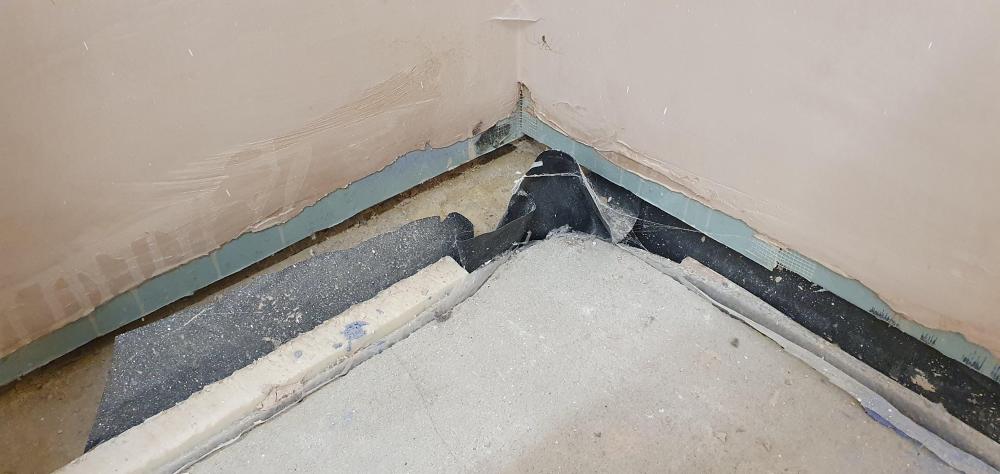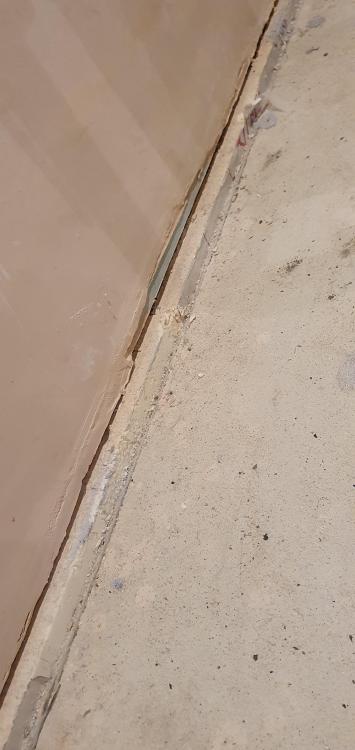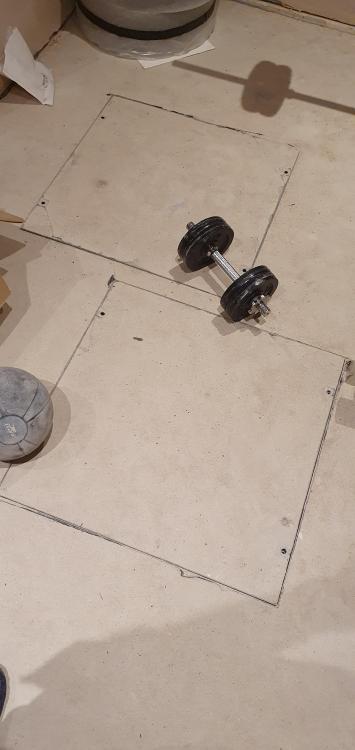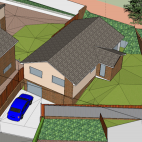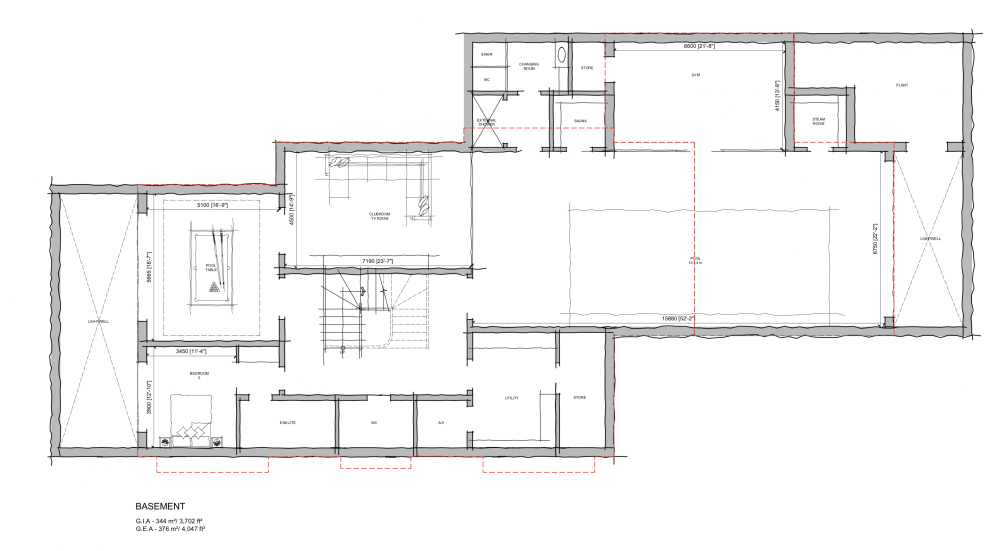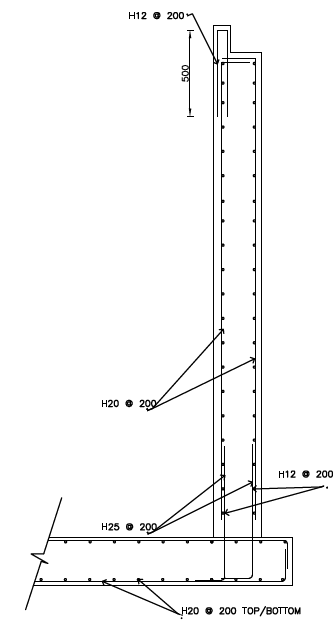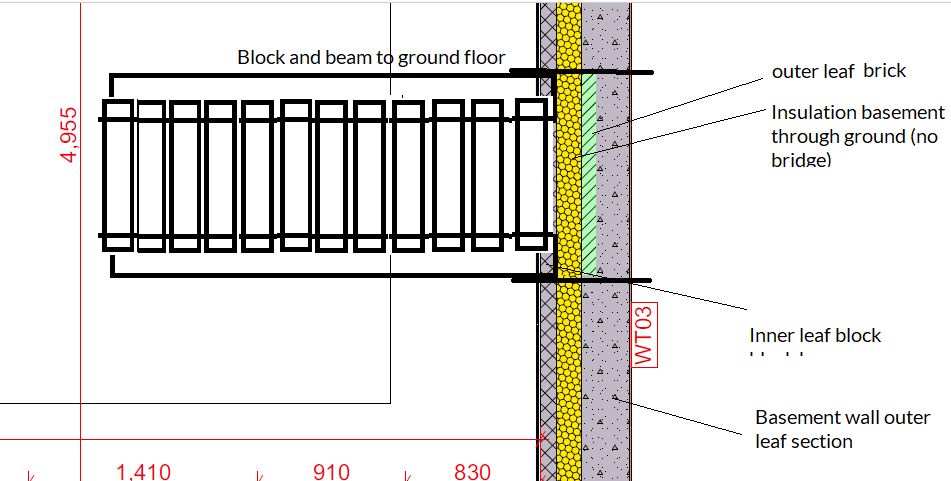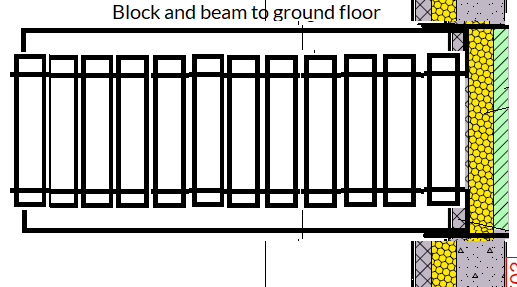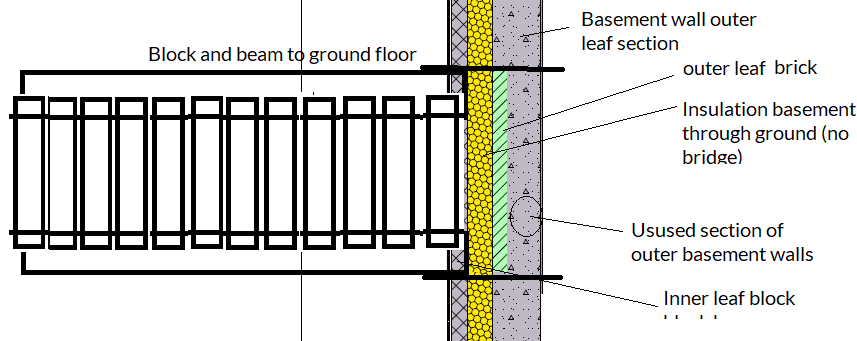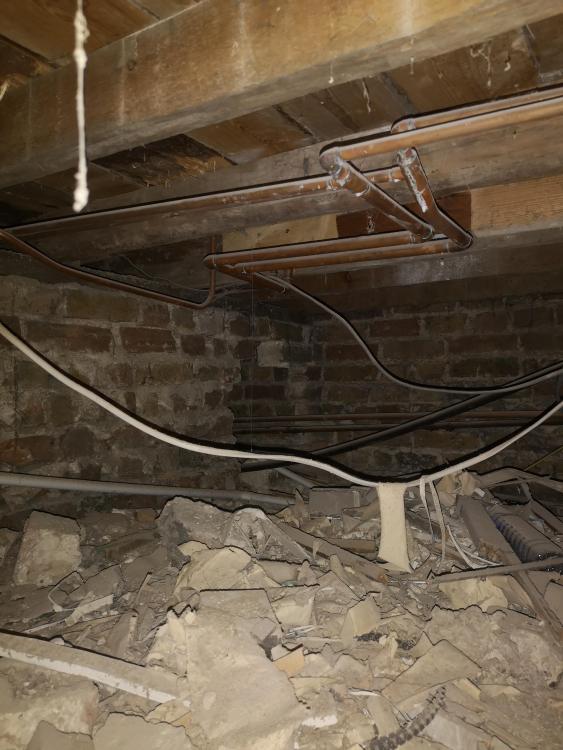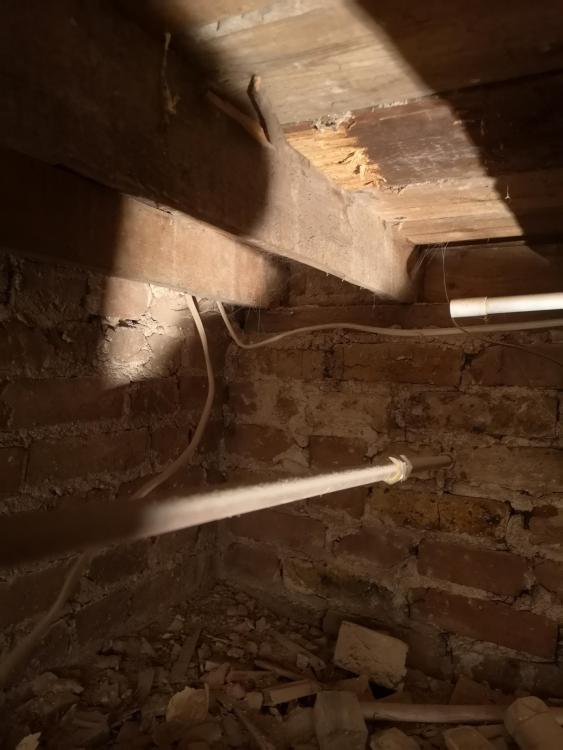Search the Community
Showing results for tags 'basement'.
-
Hi all, we moved into our self build with the basement still not complete and would like to finish it off. As cash is tight, I'm planning to do the work myself, so ideally would be looking at a solution that is possible for the experienced DIYer. The floors are currently rough screed over UFH and I need to decide how to complete the floor, ideally, before taking the project further. The rooms are: 1. A fitness studio. Ideally this would be a spring wood floor but I don't think this would work well with the UFH. My initial thought would be to pour an initial self leveling latex screed and then finish with either laminate or karndean, if funds and experience allow. 2. A den/cinema room. This is also rough screened with the added complexity that there are two large manholes in the room for the basement sump pumps. So I would have to create an access hatch for these,i guess. Again, I think that a laminate initially would privacy be easiest and cheapest here, but open to suggestions. You might see from the photos that the screed doesn't come up to the wall in many places but to insulation boards, and I'm not sure quite how to deal with these. Should the insulation be cut back level with the existing screed, or should I foam any gaps and bring the screed up to the level of the foam? One particular corner has an elevated concrete block, which is a bit of a pain Ideally I'd have a completely level floor for whatever surface goes on to of it. I'd love to hear any suggestions or experiences with something similar. I'm lacking in experience and confidence and don't really want to make an expensive blunder. Many thanks!!
-
Hello all, apologies if a similar question has been raised in the forum. I did search extensively beforehand. For my house extension, we have decided to add a basement. The original plans that the structural engineer created, stated that the outside walls of the basement were to be made using blockwork. The structural engineer made site visits in advance of the original plan. This plan was used for tendering and the basement company we choice, estimated according to the original SE plan. During further discussions between the SE and the basement company, the outside walls are now to be made of reinforced concrete. This redesign has increased the costs of the basement significantly. Nobody informed me of the increase in costs that this change would cause until shortly before the basement works started, leaving me with no option but to proceed with the basement. I am now in dispute with the structural engineer over this matter. I have a few questions: 1. Am I right to point the finger at the SE? 2. What are my options? 3. Would I be within my rights to withhold any due invoices towards the SE until this matter is clarified? Thank you all in advance!
-
I’m looking to build a half submerged (basement/ground floor) from masonry or concrete structure of some kind with external insulation and then add a further floor on top and roof of SIPS. Im after any general info about how well this might work but I have a specific question. As the load-bearing element of the basement will be on the inside of the wall, if i mount the sips on top, I’m likely to end up with the outside looking like a tiered wedding cake. Not a good look! How best to avoid 6” wide battens on outside of SIPs? 😂
-
Hi Everyone, I’m looking to build a new property for my wife and I to live in, in our current garden. Once complete and plot divided, sell the original to clear the mortgage(s). It’s on a slope with planning only likely for single storey so looking to have garage and entrance in an excavated basement. Just at planning stage in Feb ‘23 so loads to do!
-
Hi everyone, First time self builder and under the age of 30, with little experience or knowledge of construction...learning on the job type thing atm. I bought some land in North London back in 2018 and finally started the build (basement excavation and construction) back in June 2022. I have come up against a whole host of problems (Structural Engineer going into administration during the works, party wall agreement issue that lasted over a year, angry & gossiping neighbours - I live in the house opposite the site... & insurance claims against me, etc...) but have also overcome most of them now! The new build is roughy 110m2 internal space consisting of a basement with lightwell, ground floor and partial first floor, all within a tight space. I have a really great civil and groundworks guy who has helped me so much a long the way. Current stage is the finishing bits of the basement - drainage and pouring of slabs. Next stage, get the steels in and also the hollowcore planks! I will definitely be a regular poster for help! Thanks in advanced guys and can't wait to be part of the community!
-
Hi all - I'm hoping to get some advice on the below! We are currently in the process of renovating our 1 bed basement flat in London (zone 2). We have received planning approval to remove the old conservatory at the back of the house and replace it with a flat roof structure which will house the kitchen. This involves altering the internal layout of the flat as shown in the floorplans. The footprint of the house is staying exactly the same, it is 600sqft for reference. To complicate matters, our flat flooded during the flash flooding in London last summer so it has currently been stripped back to brick as part of the insurance repair works and drying out process. The flat is now completely dried out and we have put the job out to tender. We have just received quotes from builders to put the flat back together as per the proposed plans. When we received the quotes, I literally fell off my chair. The three quotes were: £270k, £353k and £403k. I am honestly in a state of shock. I'm fully aware that London building costs are unlike anywhere else in the country and that the cost of raw materials has shot up this year, however, these are on another level. I could buy another flat for that last quote! All 3 builders that quoted were aware of the fact that part of this work will be covered by our insurance claim. However, the majority of it won't be i.e. the removal of the conservatory, the change of layout etc. Am I being totally ripped off because they are aware it's an insurance job? I can't understand how someone can physically spend that much money on a 600sqft flat when the footprint of the house isn't changing and we aren't building any new walls! Unless I was coating every ceiling in gold leaf! Any advice would be much appreciated!
- 23 replies
-
- flat
- conversion
-
(and 7 more)
Tagged with:
-
Hi guys Would really appreciate any advice on building a big basement with indoor pool (400sqm, 3m high ceilings, 10m*4m pool) The swimming pool would have 1m below ground and 50cm above ground level Early considerations include: the plot is a 1.1acre and luckily there are no considerations of neighbouring boundaries etc access is good Ground investigations have been completed for my house, and the house next door, they show the same thing more or less, these can be uploaded as requested Without going into loads of detail, summary: Windlesham formation units: silty glauconitic sand to around 4.5m, then clay Encountered water around 2-2.5mbgl in areas (not everywhere) On the basis of the above shoring recommended, perhaps sheet piling needed (ground collapses around the dig quite fast in areas) dewatering needed (it looks like there is perched water around 2-2.5mbgl) We (the groundworks team and my appointed SE) have concluded so far that: We dig out 1.5mbgl - this area would be stable. Then dewater and pile below this (keeps piling cost down). We need to get to around 4.5-5.5mbgl for the basement (to include services etc and headlight approx 3m and 1m for the pool) Main areas of advice please to relate to potential costs of: Potential Piling needed Basement construction Also any recommendations of contractors around the Windlesham, Surrey area? I have received a quote from Glatharr prefabricated basements at around £500K (10 week build time) Other traditional builds are running at around £400K-£1mill! (4-6months build time) Prices include waterproofing and 10 year warranties etc Everyone so far has recommended against ICF, although the nudura rep seems to think its totally possible I think I want to go with the germans - because: They are German This is specialised work Basements leak in our area The house on top will only be as good as the basement below etc Much quicker build and I want to get on with the rest of the house BUT Is £500K a crazy price? Many thanks in advance for any help/advice Best Raju
- 19 replies
-
- sheet piling
- ground investigation
- (and 13 more)
-
Hi guys, Any Structural Engineer recommendations for my ICF Basement?
-
Hi there, just joined the forum and hoping to get some advice for the extension I'm currently planning. I’m having some plans drawn up for a ground floor extension, with a basement built underneath. We're comparing the basement option with a loft conversion, the main advantage of the basement being that it would give us more space and be cooler in the summer. The main disadvantages are of course cost and light. The basement will have 2 bedrooms and a bathroom with a staircase to get upstairs to the living room and kitchen area, and a shared light well for the two bedrooms with an external staircase to get into the garden. I’m struggling to know how deep the light well needs to be to let in enough light to make the two bedrooms a pleasant space. Currently on the designs it is 1800mm deep, spanning the width of the house. However, I would like to make the ground floor extension bigger without taking much more out of our back garden, so I'm thinking of making the lightwell smaller and adding some adjustable LED daylight panels (Lindby Kjetil LED ceiling panel 120 x 30 cm | Lights.co.uk) into the basement bedrooms. I have attached the first design draft, although internal things will move it gives a good idea of what we’re looking at. On the front/rear elevation page you can also see the loft conversion which we are considering. Some changes of note that we will make compared to this first draft: basement will be under the living area, dining area will be removed to create a bigger utility and we want to make the living area a little bigger to comfortably have a dining table in the living area. Does anyone have some experience of how deep a light well should be to let in a nice amount of light? Would the LED panels on daylight setting be good enough to compliment the natural light to make the basement rooms feel light? The rear garden (and therefore light well) are south facing. Also considering adding a shower en suite to one of the bedrooms by using the end of the light well which would reduce the size even further (approx 1.2m on one side). plans.pdf Thanks!
-
Hey, I am building a new home with basement. My structural engineer has specified a 400mm thick sl ab, and the slab reinforcement is 100% H20 rebar. This is to support a 5 bed property over ground, 1st, 2nd floor, meaning the basement walls are structural. I assumed that the slab would have been mainly made up of steel mesh, and H20 starter bars for the walls. Instead, over a 240m2 base there will be 8259 linear meters of H20 top and bottom. The wall starter bars are specified H25. Does this H20 and H25 sound overkill? £16k + vat worth of steel in the slab alone. If you know groundworks well, I would be interested in your thoughts Thanks
- 37 replies
-
- basement
- concrete slab
-
(and 3 more)
Tagged with:
-
Any Advice? Any Tips welcome. I'm about to embark on a cellar conversation. The basement is dug into the hillside, and is a 19th century listed building. So it's old. The cellar has an external door and 2 small windows to a small courtyard - so it's not entirely submerged. (Pictures attached). It does also get a nice amount of airflow. My plan is to build a stud wall, insulate and line the space will drywall, covering up some of the shoddy surfaces. I hope to keep the left brick wall for some character. The biggest concern is the far left corner (seen in pictures). At some point, it's clearly been very damp, but today and for the last few months, it seems quite dry. I'm no pro when it comes to fixing up spaces like this, so any advice is welcome. My worry is that by tanking this corner and then building a stud wall in front, it might cut off the airflow to that area and subsequently causes the damp to return. Would this be the case? Should I somehow integrate a vent for airflow to continue, or should I point all the damaged brick work and then stud wall? It's a hefty job, but I really want to turn the space around. If anyone has any advice, I'd really appreciate it. Thank you! Freddie.
-
Hey, would really appreciate your views on this one! Looking for thoughts on structural support for block and beam on a new build with basement and the various preferences from my designers Basement: 300mm concrete walls, internal cavity with insulation, inner leaf block, plasterboard Ground floor upwards: outer leaf brickwork, cavity with insulation, inner leaf blockwork My Architect wants an unbroken insulation zone from the basement to the roof, and to make this happen the block and beam to ground floor will sit on the inner leaf blockwork built up from the basement 300mm slab. We will also have block and beam on the 1st floor, so again the block and beam will sit to the inner leaf blockwork. Architect's request: My SE instead wants to shift over the block and beam so that the inner section of the 300mm basement walls provide structural support for the floors, rather than the blockwork as shown above. This is going to introduce a bridge to the insulation layer. The SE said if we use the above approach he wants to install steel posts and beams to support the floors above. SE Preference: If we didnt have a basement, and still planned to use block and beam, the beams for the floor would sit on the inner leaf of the block wall anyway. Just because we place a basement wall in does not mean it then has to be used to support the beam/hollow core floor? When we get to the 1st floor we have another block and beam, and for this we have no option but to sit the beams on the inner leaf block work. Which option should we go with? Thank you
- 28 replies
-
- basement
- structural engineer
-
(and 2 more)
Tagged with:
-
Hi, I am currently working on a basement extension in my 1890s terraced house. There was an existing basement to the rear under the dining room but I am extending towards the front under the living room. My question is about removing sleeper walls under the living room. A structural engineer has seen the existing basement and was happy that the first wall could be removed and a wooden support be put into the party wall and across as the joists above only support the floor and is not structural. Having taken this wall down as advised and new support put in I am faced with two sleeper walls going towards the front. Can I remove these and replicate the wooden support as the first OR as they are sleepers do the supports need to be steel? The living room, dining room above has no supporting walls internally. The pictures are of the first sleeper I came to and would like to support, remove, replace with wooden beam into party wall either side.
-
After demolition was completed in March, nothing happened again until late June. If you want a good worker, you have to wait. And that's my friend of 10 year plus, Noel. So I was happy to wait a few months to get him to do the extensive ground works, an experienced plant operator with a team of solid workers at his disposal. As we're building a basement, we knew excavation would be extensive. Once we'd leveled the site, dug out the founds, the drainage and main basement excavation works could start. As you can see, we've ended up with a rather large pile of bricks... A sense of scale, this is 1/2 depth of 1/2 of the main building footprint... the clay was already building up at this point! We knew then we'd have to shift a few loads away as there wouldn't be room on site. All started well... until, well, I got a knock on the office door and was greeted to Noel looking in with a strange, perplexed, half smile reminiscent of a child that's done something wrong and is straining to hide their obvious pride in their achievement. "Conor, I've found a well" "What do you mean, a well?" "A well". A few moments of silence passed. Then he showed me this: Somebody, back in 1920 or so, in their unfathomable wisdom, decided to build their house directly over a 5m deep, sandstone walled well. DONT PANIC!!! A few phone calls and a bit of head scratching later, we found a solution. 5m3 of lean mix concrete was quickly ordered! The well was pretty much at the back inner corner of the house so had to be dealt with. Luckily, the well was dry (apart from a little sludge at the bottom) and not apparently hydraulically linked to anything of importance... so engineer said fill it up! A shame, but a relatively cheap outcome for what could have been a disaster. We kept going, the clay started to be trucked away at a painful £150 a load. I lost count after a week. Another 'sitting at my office chair' moment happened just as we were seeing the end of the dig. What's the smell? Don't tell me Noel's spilled a load of diesel!!! Nope, we'd hit a large patch of soil contaminated with home heating oil. It was flagged as an issue when buying the house, but the survey indicated that it was localised and not at toxic levels. OK. So, it would appear that the oil had seeped down from the oil tank to about 2m deep in to a slight gravel strata and stuck there. The smell was incredible. Another panicked phone call to the oil contamination expert. Came out a few days later and took samples. We carefully stockpiled the contaminated soil to another part of the site on a sheet of polythene. Good job too, came back as hazardous and we would have been in trouble if we'd taken it to landfill. It's still there. And will be there for a long time in the hope that nature will take it's course and clean it.... In the end, we finished after almost three weeks (up from the one week estimate) and trucked out 51 loads of soil (816 tonnes) and imported 225 tonnes of stone. Bonus tho, we now had somewhere to put our "day" caravan and awning and finally have a spot to have a BBQ and beer after work.... and quality time with family. Ended up 50% over budget.... well, at least we're out of the ground now....
- 3 comments
-
- 11
-

-
- basement
- ground works
-
(and 1 more)
Tagged with:
-
Good morning everyone, Hypothetical scenario I am exploring which very well could become a reality and I was hoping for your thoughts on an idea I had. I admit I have no idea if this is even possible to begin with let alone worth the money or hassle. The New build is in London. In the long run, we definitely want a basement but don't currently have the finances to do the full build with basement, etc. Need to get the shell complete and move in ASAP though as paying for alternative accommodation atm. What if we were to get all the relevant soil surveys done, have all the plans drawn up and spend extra on piling to make the foundations sufficient to support the house and not need underpinning later. Also, have the ground floor installed as if there is a basement beneath it. A few years later, or when finances allow, we dig out the basement from outside without disturbing the rest of the house. Here's a YouTube series of someone digging a basement from outside the home without disturbing it: https://www.youtube.com/watch?v=W1LuFYIrUGw&list=PL51J3HlkH-iKNwCCk8krxfiNvLf9cEfyz&index=18&t=417s. If an entry point was planned in advance, we could do the same. Here are some pros and cons I can think off, if it were possible: Cons: The total cost would be more as the eventual excavation would take longer and be more tedious. The piling could/would cost more than digging the basement first and then using concrete strip foundations and reinforced retaining walls If you dig basement first, you can make a continuous retaining wall with waterproof concrete and then potentially not need a drainage system. If you retroactively do the basement, does that mean you can't make such a wall and would unavoidably need the drainage? Doing the basement later would mean the walls would be thicker in total (piles+walls) making the internal area smaller. If there are unforeseen issues in the basement build, much harder and more expensive to remedy. Pros: Cuts the time until moving in to the house, hence saving money on alternative accommodation (which would offset extra cost) Once moved in to the house, it should be much easier to oversee work, improve quality assurance and do more DIY (again hopefully offsetting extra costs) Much less likely for the project to stop mid-way due to funds running out. Once all is said and done, more money has been spent on the actual fabric of the house. Piled foundations and a basement drainage system, although more costly, provide more peace of mind and longevity? Allows time to save up or arrange alternative funding (loan, etc.) for the basement. Will appreciate comments and thoughts on the above in terms of feasibility, costs, more pros and cons, etc.
-
Hi, We have full planning and we have been obtaining quotes for the build. We are looking at ICF and the plot is on a slope, with the lower area being flood zone 2. Two of the companies have asked why we did not go for a basement as the below would not be a problem. We did have an FRA as part of the planning app and it said : RECOMMENDATIONS This report assesses that the development is located in Flood Zone 2 and 3. Therefore, as the site has a high risk of flooding. A number of recommendations can be made which may lower the risk or consequence of flooding. The key recommendations of this report are: EXECUTIVE SUMMARY A raised threshold should be included within the design, consideration must be given to raise above 15.71m AOD to mitigate against residual risk e.g. surface water routing through the site and uncertainty with the EA modelled flood levels. Avoid the construction of basements due to the proximity of the river unless a suitable design has been met to passively exclude ground water, to the satisfaction of the EA. Sustainable Urban Drainage Systems (SUDs) should be considered for incorporation into the design where feasible and the final proposal should ensure no increase in surface water runoff. Due to risk residents and those responsible for the development should be encouraged to sign up to the EA’s FloodLine Service so they are made aware of river levels. How would we find out if this would be possible? Could we submit a Planning - Non material amendment for a basement? If it's rejected would we lose the full planning? Thank you,
-
Hi, We're about to start our project - 250m² 1.5 story house with basement on a sloping site in Holywood, Co. Down. Drawings all done, just waiting for planning to come through. My background is an engineer/project manager in the water industry, so I'm planning on using a lot of innovative, rapid, and non-traditional construction methods - focus on safe, rapid construction and simplicity and reduced dependence on trades. We're also aiming for passive levels of insulation and airtightness - south facing site with lots of glass. So, expect lots of posts about insulated foundations, ICF systems, tanking, shuttering concrete walls, floor deck systems, MVHR, the lot! Thanks.
-
Hello Building hasnt started yet, the idea of a basement is becoming more appealing by the moment. It would not extend beyond the walls of the house, but would give some extra space, and I assume this is the best time to do it. Anyone have any advice? I am worried about leakage but a subcontactor I have spoken to is very confident. I know, how long is a piece of string, how much extra is it likely to add on to the build? Thank you in advance
-
Can anyone recommend a contractor with ideally a specialism in or at very least a great amount of experience in basement construction? I'm looking for someone who can serve the East Herts area. I'm currently dealing with a structural engineer who has drawn up plans which I'd ideally like independently reviewed and potentially I'd also be interested in receiving quotes for excavating and constructing the basement. So even if you know of someone good who may not be local to the Herts area, if they are prepared to carry out the review remotely, that would still be a great help. Many thanks.
-
- recommendation
- basement
-
(and 1 more)
Tagged with:
-
Our contractors effectively treated the EPS slab as if it was level ground (i.e. they ignored it) and built their traditional steel lattice & formwork / shuttering on top. Slab and a 100mm kicker first and then built off this as they did the walls in sections. The kicker is necessary to hold the vertical formwork straight on the slab. Water bar on every join (inspected by the Sika rep) and Sika additive in the concrete as this was our sole waterproofing method. I don't think any serious concrete crew will entertain EPS upstands for a basement slab as they would get trashed when doing the walls - the formwork they use is very heavy duty and is craned into position for each wall pour. In my mind, EPS formwork only really works for ground level slabs or ICF where traditional formwork is not being used. For a basement you need to use traditional formwork and apply the EPS to the cast walls afterwards.
-
I'm re-creating a few threads from e-build where I shared experience of building my 'passive' basement, useful starting points for follow on discussions --------- The original poster was enquiring about waterproofing basements and dealing with the conflicting advice from architect and contractors. My reply: Unless you're 'in the water', which your ground investigation will reveal, warrantied waterproof concrete on its own should be sufficient.We're on undulating layers of clay, lynch hill gravel and seaford chalk so relatively free draining and don't hit water until 6m. Basement excavation was 3.5m so we went for 300mm waterproofed concrete with a land drain around the slab base to a 5m deep soakaway and a 1m wide clean stone backfill.We used an approved Sika contractor and had regular inspections from Sika during the pour, checking water bar placement, penetrations etc. We now have their 15 year insurance backed warranty against water ingress.The overall 10 year build warranty (from Ark) was satisfied by this as were BC.We have friends nearby who built close by the Thames and their basement is half submerged in ground water - they used Glatthar and were very satisfied but it wasn't cheap.We did our entire 122m2 basement for £120k with a single contractor which included demo & cart-away of existing building, excavation & muckaway and the construction of the basement itself - plus all services (fouls, rainwater, water, gas & BT duct & electric). I sourced the under slab & wall insulation separately as they weren't familiar with it at the time.Glatthar wanted about £100k for just the basement construction and we would have had to fund the groundworks separately - which would have been at least half as much again.We also designed our basement as an 'open box' with no structural internal walls so we are free to change the layout if we wish, currently having it framed out which is only costing a few £100 in labour and timber.Good luck, lots FUD surrounding basements and many of the contractors push their preferred systems (typically with additional cost) in a take it or leave it fashion but get what works best for your site and gives you the necessary peace of mind and suits your pocket.
-
Hello all, as complete newbies, we started our Berkshire build last August after over a year of devouring e-build for advice. We're a fairly standard MBC passive house above ground with a passive basement below which is apparently a first. Now at the plastering stage so plenty of experience under our belt to share and still plenty of advice required! It's good to be back, Mumsnet was not doing it for me.

